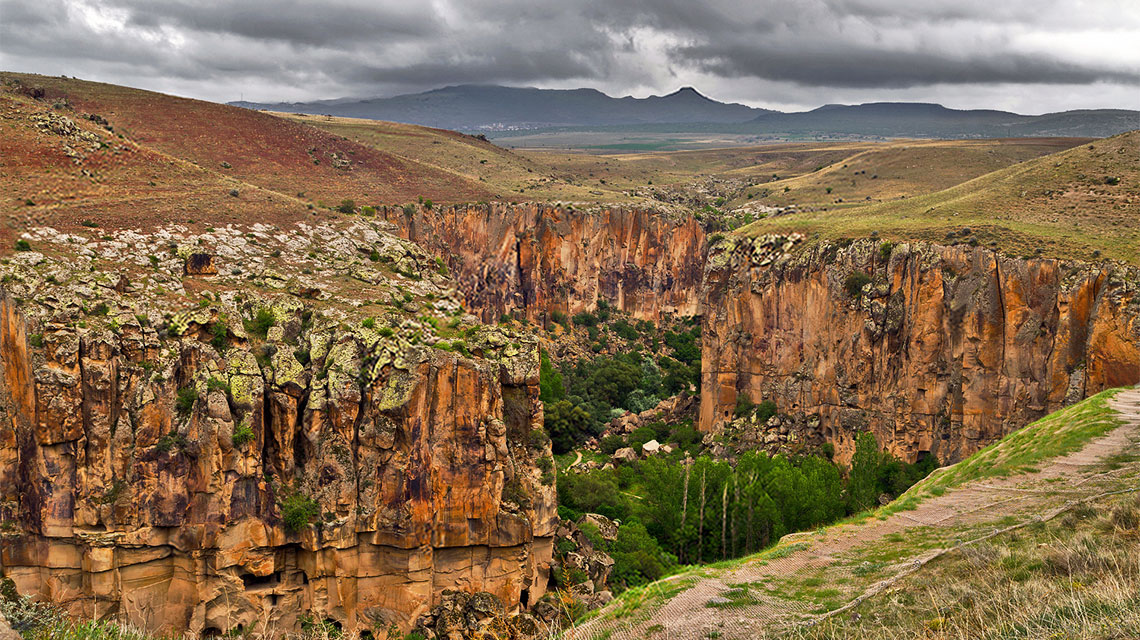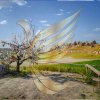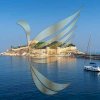Ihlara Valley (regularly incorrectly spelled as Ilhara Valley), close to Mount Hasan and Mount Melendiz (two of the three volcanoes of Cappadocia) is a gorge with a profundity of roughly 100m and was shaped by the Melendiz River a great many years prior. It starts at Ihlara town and finishes with Selime Monastery at Selime town subsequent to making 26 curves along 14 kilometers.
It is accepted that the valley housed in excess of 4,000 homes and a hundred cavern temples adorned with frescoes. Around eighty thousand individuals once lived in Ihlara Valley.
There are 4 doors to Ihlara valley. The first is toward the beginning of the valley in Ihlara Village. The subsequent one opens to the fourth kilometer of the valley and it is the most well known passageway, and has in excess of 300 stages down to the valley. The third passageway is Belisirma town which permits you to enter the valley by driving. It is situated in the center (seventh km) of the valley. In the event that you will visit the valley by your vehicle, this is the best spot to leave your vehicle. Belisirma has additionally a few eateries by Melendiz River to eat. The majority of the guided visits end their strolling here after lunch. The last passage is the finish of the valley at the Selime Monastery. A portion of the trekking visits which walk the entire valley start from this end. The best piece of the valley is the primary 7km part from Ihlara Village until Belisirma Village where you can see the greater part of the houses of worship and normal excellence.
Ihlara Valley, CappadociaIt is lovely to stroll through the Ihlara valley by the vineyards, poplars and pistachio trees to the alleviating sound of the hurrying water (Melendiz River), and encompassed by a rich untamed life of reptiles, frogs, butterflies, flying creatures and here and there hawks and different warm blooded creatures like sheep and sheep.
There many cavern chapels in Ihlara Valley. The vast majority of them show scenes not at all like the scenes delineated in other Cappadocian houses of worship. Truth be told, they are suggestive of the early houses of worship of Syria and the Coptic holy places of Egypt. The writings in Ihlara chapels are abnormally long.
Probably the most significant houses of worship in the Ihlara Valley are:
Kokar Kilise (The Smelly Church)
Kokar Kilise Ceiling, Ihlara Valley, CappadociaThe Kokar Kilise (The Smelly Church) is situated in the primary quarter of the valley between Ihlara Village and fundamental passageway. It very well may be entered through a destroyed apse. The first passage has been hindered by an embarrassing margin. There are many frescoes covering the dividers of Kokar Kilise. On the left side, you can see the Annunciation, the Visitation, the Proof of the Virgin, the Nativity and the Adoration of the Magi scenes. On the right, you will see the Last Supper, the Betrayal, Jesus being Led Away, Jesus before Annas and Caiaphos, the Crucifixion and the Entombment. On the entryway confronting the passageway there is a Deesis above, with scenes of the Flight to Egypt and The Last Supper beneath was gravely harmed when openings were made at an a lot later date for windows and an entryway driving into the entombment chamber. On the roof you can see the Ascension and the Pentecost together with an enormous Greek cross with the hand of God giving blessing in the middle. On each side of the lower portions of the vaulting there are frescoes portraying the witnesses standing and situated.
Purenli Seki Kilisesi (Church with the Terrace)
Purenli Seki Kilisesi is likewise situated in the principal quarter of the valley, around 100m from Kokar Kilise. You need to move about 25m over the degree of the stream. It is made out of a passage, an internment chamber and a twofold naos, isolated by pillared arcades, each having an apse. The congregation is secured by frescoes delegated “obsolete” however described by impeccable subtleties, a solid feeling of structure and stunning opportunity of articulation.
Agacalti Kilise, Ihlara Valley, CappadociaAgacalti Kilise (Church under the Tree)
At the point when you turn directly at the base of the stairs from the primary passage, you will get yourself 10m from the congregation. Set yourself up for an unexpected when you enter the congregation through the destroyed curve for an entirely unexpected style of design. This congregation is very not the same as different places of worship of the Byzantine universe of the tenth and eleventh century Cappadocia, with its agreeably differentiated shades of red, green and yellow, the subjects of its artworks and its enrichment of blossoms, rosettes and checkerboard designs, all selling out solid eastern impact. The Church, otherwise called the Church of Daniel or the Church of Pantassa, has a free cross design plan.
On the divider inverse the passageway there is a fresco of Daniel in the Lion’s Den. The left cross-arm contains the Annuciation, the Visitation, the Nativity and the Magi. The correct cross-arm contains the Flight into Egypt, the Baptism and the Dormition. The Dormition of the Virgin (Koimesis) is special most definitely. It is made out of two scenes. In the main scene, Mary is lying on a bed, with Christ joined by St. John sitting on one side of the bed to recoup her spirit. In the upper scene Christ is demonstrated holding his Mother’s spirit, with an Angel behind him.
The wooden extension in Belisirma VillageSome of the other significant
houses of worship of Ihlara Valley are:
- Egritas Kilise (Church with Crooked Stone)
- Sumbullu Kilise (Hyacinth Church)
- Yilanli Kilise (Church with Snake)
- Karagedik Kilise (Church with Black Collar)
- Kirk Damalti Kilisesi (Church of St. George)
- Bahattin Kilise (Bahattin’s Granary Church)
- Direkli Kilise (Pillard Church)
- Ala Kilise (Mottled Church)







0 comments for this post